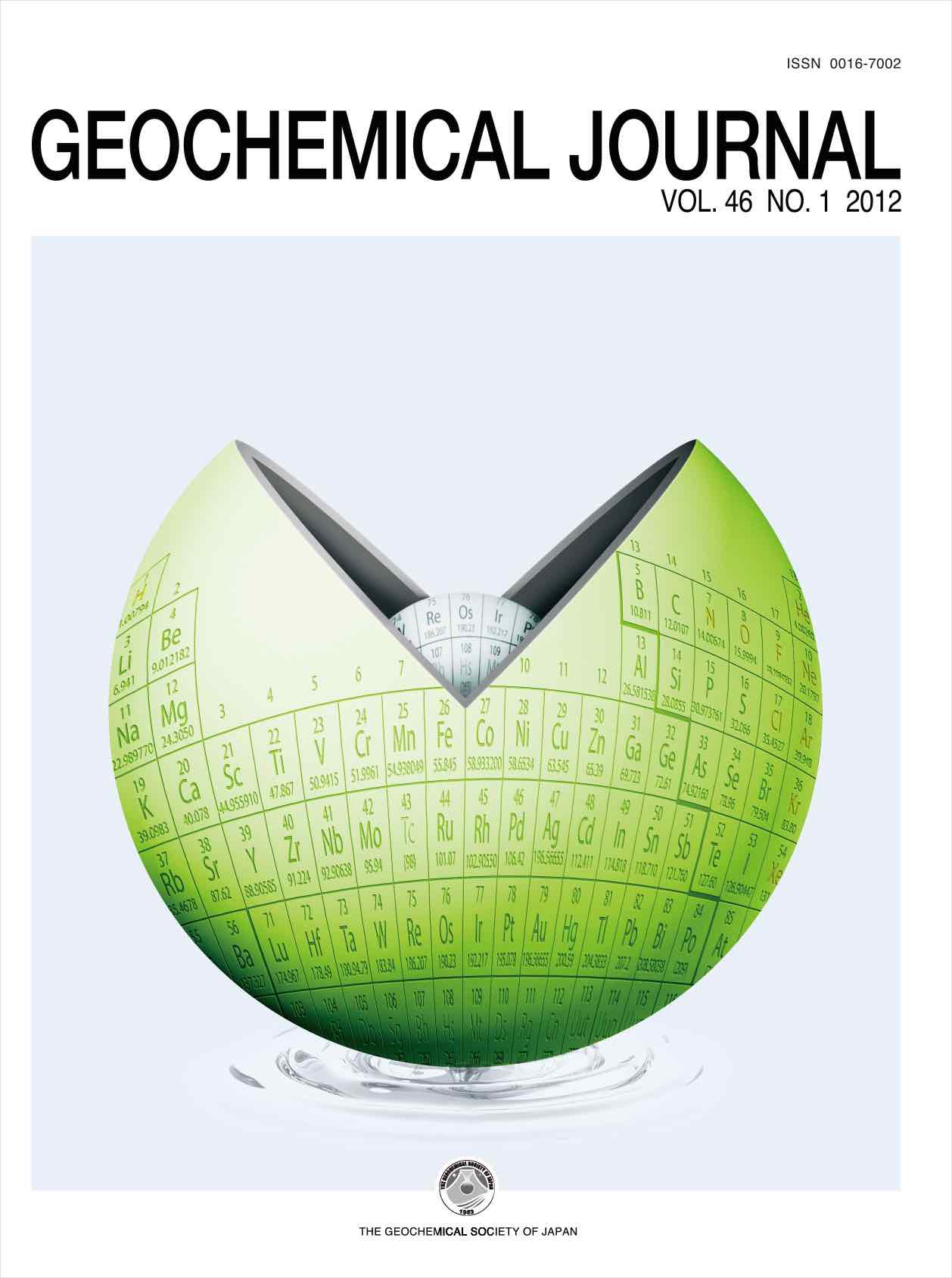
- |<
- <
- 1
- >
- >|
-
A. Peketi, A. Mazumdar, S. P. K. Pillutla, D. J. Patil原稿種別: research-article
2020 年54 巻1 号 p. 1-11
発行日: 2020年
公開日: 2020/03/09
ジャーナル フリー
電子付録Pore fluid chemistry of sediment cores from two coring sites collected from Mahanadi basin (Bay of Bengal) during IODP-353 was studied to understand the intra-basinal variation in microbially mediated sediment biogeochemistry as well as methane hydrate occurrences. The ionic concentrations of SO42− shows quasi-linear profiles reflecting the steady-state situation in a dominantly diffusion controlled system. Pore-water (ΔTA + ΔCa2+ + ΔMg2+)/ΔSO42− ratios and δ13CDIC depth profiles suggest the influence of dual sulfate reduction pathways (organo-clastic and anaerobic methane oxidation) on the sediment fluid chemistry. δ13CCH4 values indicate microbial origin of methane. The lowest δ13CCH4 values in the present study are reported from the sulfate methane transition zone (SMTZ) and attributed to secondary methane generation via microbial recycling of 13C depleted DIC produced through AOM. Based on the drop in Cl− concentrations relative to the ambient sea-water, we predict the occurrence of disperse/pore-filling methane hydrates in the site U1445 proximal to the basin in which the SMTZ is slightly deeper from the surface compared to the distal (northern) U1446 site.
抄録全体を表示PDF形式でダウンロード (1629K) -
Liangliang Yu, Lihui Tian, Deru Xu, Qiang Shan, Maozhou Hou原稿種別: research-article
2020 年54 巻1 号 p. 13-27
発行日: 2020年
公開日: 2020/03/09
ジャーナル フリーThe late Triassic Baolun gold deposit hosted by Silurian phyllites is a large-scale gold deposit in Hainan Island, South China. In order to discuss the source of ore-forming material and deposit type, H-O isotope analyses of fluid inclusion, He-Ar isotopic and S isotopic studies of pyrite have been analyzed from auriferous quartz veins. The oxygen and hydrogen isotopic compositions (δ18O = 4.1–6.5‰, δD = –77.7 to –60.5‰) of ore-forming fluid, which are incompatible with metamorphic fluid, coincide with the characteristics of magmatic fluid. The He-Ar isotopic compositions from pyrite imply that the metallogenic material is derived from a crustal component and a mantle component. The δ34S values of pyrite and pyrrhotite from mineralized quartz veins range from 2.3‰ to 6.3‰ and 1.5‰ to 7.1‰ respectively, which are lower than δ34S values of pyrite from ore-hosting rocks and other gold deposits in Hainan Island. The values are higher than that derived from the mantle and are similar to magmatic rocks in nearby, which suggest that the sulfur is mainly derived from magmatic rocks of Hainan Island. Hence, the ore-forming fluid is primarily the product of magmatic differentiation, but the contribution of meteoric water could not be excluded. Based on the close spatial and temporal relationship with the Jianfnegling granite pluton (ca. 240 Ma), which are alkali granites containing mantle components, the Baolun gold deposit is proposed to be an intrusion-related gold deposit instead of presupposed orogenic gold deposit. Based on structures, ore-hosting rocks, and isotope characteristics, the Baolun gold deposit was identified as a sediment-hosted intrusion-related gold deposit. Combined with contemporary Gezhen-type gold deposits (ca. 228 Ma) that are a series of similar gold deposits hosted by the Baoban Group along the Gezhen ductile shear zone in Hainan Island, it is concluded that an identical gold metallogenic event occurred in Hainan Island during middle-late Triassic.
抄録全体を表示PDF形式でダウンロード (2258K) -
Jingyu Liu, Nianqiao Fang, Zhiyin Tang, Junzhu Wang原稿種別: research-article
2020 年54 巻1 号 p. 29-41
発行日: 2020年
公開日: 2020/03/09
ジャーナル フリー
電子付録Many siliceous rocks representing different geologic environments are exposed in the Palaeo-Tethys orogenic belt of western Yunnan, China. In this paper, silicon and oxygen isotopes and major and trace elements including rare earth elements (REEs) of siliceous rocks collected from the region are analysed. According to geochemical discriminant proxies, such as Al/(Al + Fe + Mn), REE patterns, the Al-Fe-Mn and δ30Si-Al2O3 diagrams, most siliceous rocks in this study are found to have derived from marine biogenic silica, and a few samples were affected by hydrothermal activity. The redox-sensitive trace elements, such as V, U, Ni and Mo, of the siliceous rocks suggest that the water body of the Palaeo-Tethys oceanic basin in western Yunnan experienced great changes between oxic and anoxic environments during its evolution. The major element discriminant diagrams and the δCe, LaN/CeN and δ30Si values indicate that the basin of the Palaeo-Tethys was limited and difficult to match with an open ocean basin. The Palaeo-Tethys oceanic basin may have been delimited by several islands with poor circulation of seawater, which is called an archipelagic ocean. The δ30Si values of siliceous rocks deposited in the archipelagic ocean range from 0.3‰ to 0.8‰, which is narrower than the range of radiolarian siliceous rocks reported previously. Unlike typical shallow sea, hemipelagic and pelagic environments, the silicon isotope characteristics of siliceous rocks in the archipelagic ocean do not show a clear trend from shallow sea to deep sea.
抄録全体を表示PDF形式でダウンロード (1203K)
- |<
- <
- 1
- >
- >|